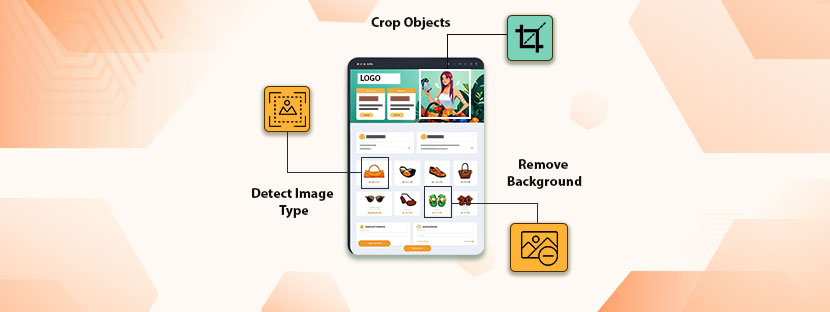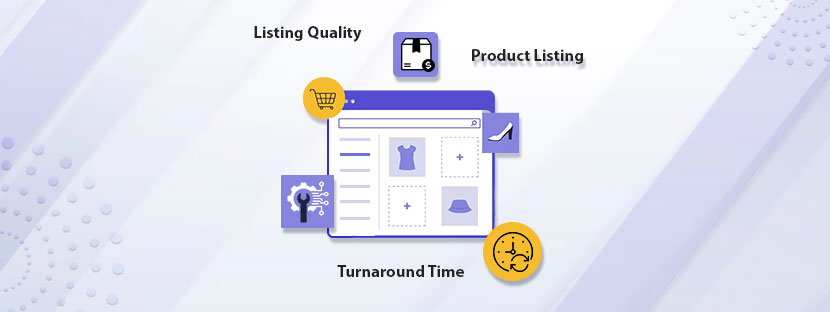In This Article
Who can relate to this?
Visiting an online shop to purchase something but realized that the product information was incomplete. But still, everything seems good, all the reviews are positive, images are also there. Would you love to order that product? Simply NO! Because the website did not optimize eCommerce product catalogs to add complete product information.
You as a business definitely want your products to get sold through the online marketplace. Therefore, you need to make your product catalog optimized so that your customers can find your products easily. Besides optimizing the catalogs, providing accurate product descriptions and engaging visuals is also important.
Can you guess how much growth the eCommerce sector is expecting in the next few years? Well, it is about a 60% increase in sales volume in the coming few years. It also means that you have more opportunities to grow in the eCommerce sector than before. With the implementation of a consolidated product catalog, you can excel in grabbing this opportunity.
In this piece, you will find a few steps to optimize eCommerce product catalogs efficiently. besides catalog optimization, you will also find here some useful tips to perform the optimization tasks in a better manner.
Let’s start with the basics first!
A. Understanding the Basics
1. What is eCommerce Product Catalog?
To understand what is a product catalog, imagine you want to buy a book from an online store. You probably search for the book name in the search panel first. If the website is selling that book it would present you with the book in the search results. Think about the book that appeared in the search result!
The search result might have an image, probably some clear images of the book. Along with the image, the name of the book, the author’s name, the publisher’s name, and the price everything will be there. So with the help of a product catalog, the website manages that book’s information.
In simple words, a product catalog is a marketing collateral that lists the necessary information about the products. For selling products online, businesses need to optimize eCommerce product catalogs with proper measures. Personalize your product catalogs plays a crucial role in influencing customers’ decisions, especially at this time. Nowadays, many companies rely on outsourcing Catalog Processing Services to manage their e-commerce catalogs.
2. Why to Optimize eCommerce Product Catalogs
From a 360-degree view, preparing product catalogs helps the business stakeholders observe the business better. The sales team uses the product catalog to inform customers about the product but in online business the website itself does that. On the other hand, buyers or customers check the product catalog to make purchase decisions.
Besides checking, eCommerce catalogs also help customers compare products through this list. Also, some eCommerce companies add a section on their website to compare their products with the competitors’ products.
B. The 9 Steps to Optimize eCommerce Product Catalogs
1. Update in Real Time
Not having products available and showing an “Out of Stock” message can upset customers and even shut down an entire online store. E-retailers face a tough task in keeping product information up to date instantly. With the optimize eCommerce product catalogs, retailers can manage that. However, companies nowadays use the robust catalog management tool to update products in real-time.
When an online store doesn’t meet promises, customers might share negative comments on social media. Therefore, this will harm the brand and cause a loss of customers and revenue. Big marketplaces like Amazon and Alibaba penalize businesses for out-of-stock items, making it worse if customers complain. Timely updating of product data is crucial for online sellers. Hence, product catalogs help businesses to know the picture in real-time.
Automating the real-time update of product data helps online sellers identify when their products are in high demand. It can be during the month, year, or specific times of the day. This automation allows them to stock up in advance and also prevents out-of-stock situations giving a competitive advantage. However, besides automation, to optimize eCommerce product catalogs, you can also trust manual processes.
2. Create Centralized Data Repository
Meeting product safety guidelines varies from county to state and country. Pricing needs to match specific contracts for certain customers. During eCommerce sales, managing separate product prices is necessary, along with handling supplier information and SKUs (Stock Keeping Units). However, it’s practically impossible for a person to accurately record and manage product details, descriptions, and prices.
Product Information Management Systems (PIMs) come to the rescue by providing a centralized product repository. They gather information about every product for sale, including complementary items. PIMs store crucial details such as product names, categories, descriptions, pricing, etc. Utilizing PIMs helps to optimize eCommerce product catalogs and facilitates the bundling of items for upselling and cross-selling.
Besides that, catalog management process, equipped with features for collecting, managing, and enriching product data, play a crucial role. A central product repository enables a consolidated product catalog that is accessible across all sales and eCommerce channels. With this approach, your brand will become more customer-centric, consistent, and compliant with managing product data. Hence, the key to creating a rewarding customer experience lies in having a centralized reliable product catalog.
3. Add Quality Image
Good product photos are crucial for selling online and attracting more customers. Having high-definition (HD) images that customers can zoom into makes your brand look trustworthy. You don’t have to spend a lot on photography or professional photo editing services to make your product images look top-notch. To personalize your product catalogs, pay attention to a few key aspects:
Investing in these photo editing and eCommerce product catalog management aspects, even with professional editing services, can significantly enhance the quality of your product images. Added to this, this will make your brand more attractive to customers using the best and most appropriate catalog structure.
4. Write Consistent Description
Imagine how a customer will be convinced to buy a product. Simply by reading the product description! Isn’t that? Hence, to optimize eCommerce product catalogs, you need to keep your focus on making your product description comprehensive. With the help of an efficient catalog management tool, you can easily do that. Consistent and comprehensive product descriptions will increase the chance of convincing your customers.
Remember these three things while writing your product description. First, you need to add complementary comments regarding your product in the description. Second, highlighting the features of the product is extremely important. Finally, you need to add simple recommendations so the description looks convincing. Anyway, getting people for managing your catalog are also effective so you can try that.
5. Crete Catalogs SEO Friendly digital catalogs
Crafting an eCommerce catalog with SEO in mind is a smart move to boost your products’ visibility on Google. Not limited to this but it will attract organic traffic and showcase your offerings to potential customers in the best way. To optimize eCommerce product catalogs, you need to use the SEO techniques efficiently.
In this SEO game, optimizing the keywords acts as powerful ammunition for eCommerce sales. However, having an appropriate and SEO-optimized appropriate catalog structure is equally crucial. It not only generates traffic-friendly content for search engines but also ensures accurate product data. Also, this will increase the accessibility of digital catalogs effectively. Many companies are now relying on product data entry services to get these things done professionally.
The consolidated product catalog structure is like the roadmap for your product content, organizing it into categories, subcategories, batches, and tags. This organization plays a vital role in determining how easily your product can be discovered on search engines. With best SEO practices, you can personalize your product catalogs efficiently.
Inculcating SEO into eCommerce is like putting your products in well-labeled sections so that search engines can quickly find them. Also, it’s like arranging all products neatly on the shelf to make shopping (or searching) a breeze. To optimize eCommerce product catalogs, you need to follow the best practices of SEO friendly digital catalogs. Therefore, you not only please potential buyers but also catch the eye of search engines as well. Hence, it will make your products more likely to pop up when someone types in a related search.
6. Map Customer Journey
Proving customers with a flawless experience is the ultimate thing that every online shopper wants. With the help of the customer journey map, online businesses can efficiently provide smooth experiences to customers. It’s all about predicting how your customers would go through the journey to search for your products online.
To optimize eCommerce product catalogs, you need to plan out a customer journey map first. This map helps businesses to understand the expectations, pain points, and desires of customers. With the understanding of this map, businesses can efficiently enhance customer experiences.
7. Check the Accessibility of Digital Catalogs
Despite having SEO friendly digital catalogs, will your customers only shop for your products from their laptops? Simply NO! They might see your products from mobile or tablets and probably shop from that. Therefore, you need to optimize your catalog so it can be accessible from all devices. Besides optimizing the texts, you need to focus on the images as well.
Therefore, customers can easily access your website from any device and make purchases. For a tip, you need to use large fonts so that your information can become zoomable and readable as well. Remember that, you need to use those fonts only that can provide optimized display from mobile screens.
So, when you’re building your eCommerce catalog, think about how you’re organizing your products. Make it logical and clear always, and use all SEO keywords wisely. It’s not just about having great products; it’s about making sure people (and search engines) can easily discover and appreciate them. Lastly, an appropriate catalog structure doesn’t just organize your products; it organizes your path to success in the vast online marketplace.
8. Make Catalogs Optimized
Always ensure that the catalogs you use to build your brand and boost revenue are easily accessible and shareable. Therefore, you can share them across social media, media portals, catalog-sharing sites, and emails. With the help of a catalog management tool, you can work on the attributes to customize the catalogs.
Attributes for customizing your catalog include different features. Some of these like easily downloadable options, links highlighted, multi-lingual texts, and others. You need to incorporate all these features into your catalog so it can become easily sharable. Hence, you can share the product catalog via social media and email.
9. Explore Digital Marketing Tricks
Incorporating social media ads can do wonders in the present situation if you optimize eCommerce product catalogs. Companies across the globe are heavily relying on social media to sell their products online. Hence, to increase your sales, you need to explore digital marketing tricks efficiently. With these tricks, you can target your customers more intensively and increase the accessibility of digital catalogs as well.
Sum Up
Running ads on social media accurately can increase your product visibility. It will not only boost traffic to your website but also increase the customer conversion rate. For this reason, many companies outsource catalog processing services to gain all benefits. Outsourcing is easy, outsourcing is cheap, and outsourcing can bring more efficiency to e-commerce sales.












